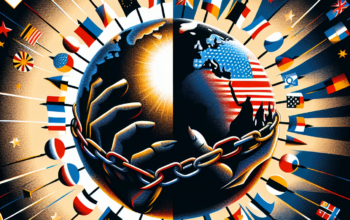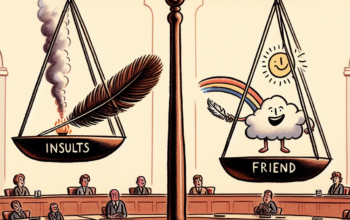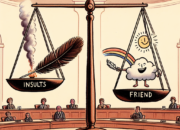Introduction
In today’s fast-paced digital landscape, where information is disseminated rapidly, the influence of political narratives on public perception of issues has never been more pronounced. By 2025, the interplay between politics and public opinion is increasingly shaped by strategic storytelling, media portrayal, and social media discussions. Understanding how political narratives sway public sentiment is crucial for analyzing contemporary issues, shaping debates, and driving voter behavior. This article delves deeply into the multifaceted ways political narratives are constructed and their consequential impact on public perception.
The Mechanics of Political Narratives
Political narratives are constructed stories or accounts that shape the perceptions and understanding of political issues among the general populace. At their core, these narratives are framed through specific lenses — often guided by political ideologies, party agendas, and the interests of influential actors. In 2025, the urgency of climate change is a prime example of how narratives are constructed. Activist groups portray climate change as an existential threat, using data and emotional appeals to galvanize public support for environmental policies. On the other hand, industry coalitions may craft narratives that promote economic growth, arguing that certain environmental regulations could hinder job creation, thereby shaping public perception in a counter-narrative way.
The rise of social media platforms has also transformed narrative mechanics in significant ways. Information spreads faster than ever, and political actors leverage these platforms to resonate their narratives with specific demographic segments. Algorithms curate content, meaning that users often receive information reinforcing pre-existing beliefs. This echo chamber effect can lead to polarization, as opposing viewpoints and alternative narratives are filtered out, resulting in a skewed public perception of various issues. In essence, political narratives create frameworks of understanding that affect how individuals interpret complex topics, influencing public discourse and policy decisions.
<h2The Role of Media in Shaping Political Narratives
The role of media in shaping political narratives cannot be overstated. Whether it is television, online news, or social platforms, the media serves as a primary conduit through which political narratives are communicated. By 2025, media outlets have increasingly adopted storytelling techniques that emphasize dramatic visuals, compelling narratives, and emotional resonance. For instance, media coverage of immigration often frames the discussion in moral and ethical terms, showcasing individual human stories that evoke empathy. This portrayal can significantly influence public sentiment, encouraging support for humanitarian-based immigration reform efforts.
Conversely, media bias can create narratives that undermine public understanding of complex issues. For instance, sensationalized reporting on crime rates may lead to increased fear and polarization, shaping public opinion around calls for stricter law enforcement policies. In the digital age, fact-checking and integrity in reporting have become critical components in evaluating how media contributes to political narratives. Moreover, the emergence of citizen journalism and independent news platforms has diversified the narrative landscape, providing alternative viewpoints; however, this has also led to misinformation challenges that further complicate public perception.
The Impact of Political Narratives on Public Policy
Political narratives have a profound influence on the formulation and implementation of public policy. As narratives shape public perception, they also direct the attention of policymakers. For instance, the narrative surrounding healthcare as a human right has gained traction in recent years, culminating in increased support for universal healthcare initiatives. Policymakers, sensing public sentiment, have proposed legislation reflecting this narrative, demonstrating how public opinion can drive policy changes. This reciprocal relationship between public perception and policy underscores the significance of strategic narrative framing in political contexts.
Additionally, political narratives often highlight particular issues while downplaying others. For example, in 2025, narratives focused on national security may overshadow pressing issues like education reform or income inequality. The chosen narrative frames the agenda, determining which policies are prioritized in legislative discussions. This phenomenon is often apparent during election cycles when candidates strategically emphasize specific issues that align with their narratives to gain voter support.
Furthermore, political narratives can lead to historical revisionism, as parties emphasize certain episodes in history to support their current policy positions. The discussions surrounding historical injustices, such as systemic racism or colonialism, have become pivotal in shaping narratives around social justice movements. These narratives impact the policy landscape, demanding reparative actions that address historical inequalities. In this way, political narratives extend beyond mere words and shape the very fabric of society by influencing laws and societal norms.
Public Reception and Resistance to Political Narratives
Despite the powerful influence of political narratives, public reception is not uniform. Individuals assess narratives through the lens of their personal experiences, cultural backgrounds, and social identities. As diverse as these backgrounds are, they lead to a complex tapestry of reactions to political narratives. Some sections of the public may embrace particular narratives that resonate with their values, while others may resist or reject them entirely. This divergence is particularly evident in matters such as climate change, where individuals who prioritize economic growth may resist environmental narratives, viewing them as threats to economic stability.
Grassroots movements and counter-narratives often emerge in response to dominant political narratives. These movements utilize social media as a platform for mobilization and to disseminate alternative viewpoints. For instance, the rise of the “Defund the Police” movement exemplifies how grassroots efforts can redefine public perception in the face of established narratives around law enforcement. By 2025, public figures and communities leveraging hashtag activism, online campaigns, and protest actions highlight how dissenting voices can shape or reshape political narratives and influence public opinion.
Furthermore, educational initiatives around media literacy have gained importance as citizens grapple with discerning the truth in a narrative-rich environment. As awareness grows regarding misinformation and biased media, individuals are increasingly critical of the narratives they consume. This vigilance can result in a more informed public, one that recognizes and resists narratives that do not align with their reality or values. In this way, the dynamic interplay between political narratives and public perception becomes a platform for engagement, dialogue, and advocacy.
The Future of Political Narratives and Public Perception
Looking toward the future, the evolution of political narratives is poised to continue in tandem with technological advancements and shifts in societal values. The landscape of political communication will likely become even more fragmented as virtual reality and immersive storytelling gain prominence. In this environment, narratives will not only be consumed but experienced, creating profound emotional connections and shaping public perception in unprecedented ways. As we progress through 2025 and beyond, voters will increasingly demand authenticity and accountability in political narratives, leading to a potential restructuring of how policies are communicated and enacted.
Moreover, the intersection of AI and political narratives presents both opportunities and challenges. The potential for machine learning algorithms to curate content may further polarize public perception, creating isolation within demographic groups that are served tailored narratives. However, this technology can also empower grassroots movements and enhance engagement in previously unrepresented communities. As controls and regulations evolve, there will be ongoing discussions about ethical AI usage in relation to political narratives and their impact.
In addition, the growing emphasis on diverse representation in political discourse will likely shape the narratives that emerge in the public sphere. As marginalized voices gain visibility and influence, we can anticipate a shift in the narratives that dominate political debate. This evolution will demand that traditional narratives be reassessed, incorporating broader perspectives that reflect an increasingly diverse society. The result may be a more engaged citizenry that feels represented and empowered to participate in shaping narratives and public opinions.
Conclusion
The dynamics of political narratives and their influence on public perception are complex, multifaceted, and ever-evolving. As we navigate through 2025, it is evident that these narratives play a critical role in shaping public discourse, policy decisions, and societal norms. From media influence and personal reception to future opportunities with technology and representation, understanding the nuances of political narratives is vital for fostering an informed public. As citizens, engaging thoughtfully with political narratives can empower individuals and communities, shaping a collective narrative rooted in understanding, empathy, and constructive engagement.
FAQs Section
1. What are political narratives?
Political narratives are stories or frameworks that are created and communicated by political actors, parties, and the media to shape public perception and understanding of political issues.
2. How do political narratives impact public opinion?
Political narratives influence public opinion by framing issues in specific ways. This framing can elicit emotional responses, align sentiments with certain ideologies, and guide voters’ attitudes and behaviors.
3. What role does social media play in shaping political narratives?
Social media amplifies political narratives by allowing them to reach wider audiences quickly, facilitating the formation of echo chambers, and enabling users to share content that aligns with their beliefs, thus influencing perceptions.
4. How can public perception resist dominant political narratives?
Public perception can resist dominant political narratives through grassroots movements, alternative media, and educational initiatives that foster critical thinking and media literacy among citizens.
5. What is the future of political narratives?
The future of political narratives is likely to be characterized by technological advancements, the integration of diverse perspectives, and evolving public demands for authenticity and representation in political communication.












